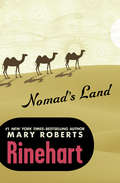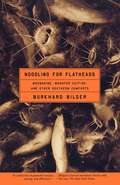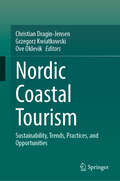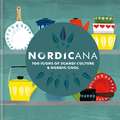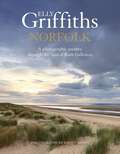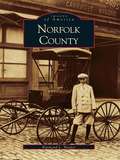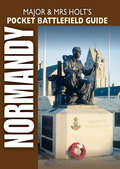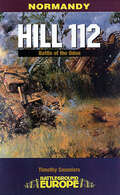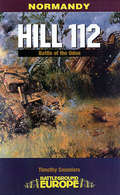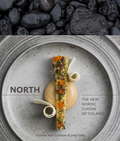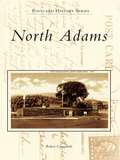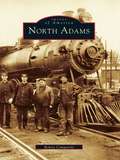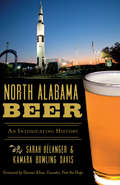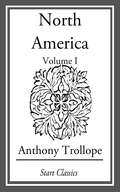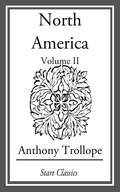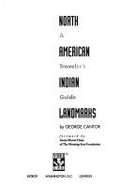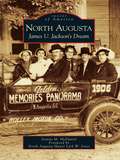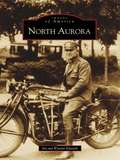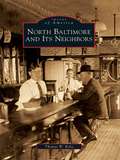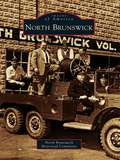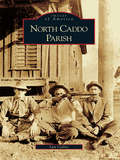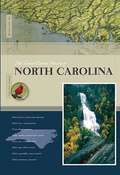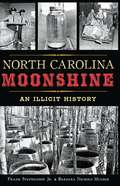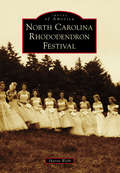- Table View
- List View
Nomad's Land
by Mary Roberts RinehartA memoir of desert travel—by camel and horseback—from a beloved authorAn internationally renowned writer of mystery fiction, Mary Roberts Rinehart knows her way around an exotic setting. When faced with the Pyramids, the Nile, and the sprawling Egyptian desert in her own life, she does not fall in with the crowd of tourists waiting in line at the tombs of the Pharaohs. Instead, she hikes up her skirt, plants her pumps in the sand, and hops on a camel. She has but one question: Where am I supposed to sit?On a hundred-mile expedition into the Egyptian desert, Rinehart does her best to master the herky-jerk of this desert beast. But traveling with an entourage of well-mannered people, she finds that desert living is not completely stripped of the comforts of home. Upon returning to the United States, Rinehart makes an excursion out west, which, she finds, is where the true adventure begins.
Noodling For Flatheads
by Burkhard BilgerThe Old South is slow to give up its secrets. Though satellite dishes outnumber banjo players a thousand to one, most traditions haven't died; they've just gone into hiding. Cockfighting is illegal in forty-eight states, yet there are three national cockfighting magazines and cockpits in even the most tranquil communities. Homemade liquor has been outlawed for more than a century, yet moonshiners in Virginia still ship nearly one million gallons a year. Some of these pastimes are ancient, others ultramodern; some are illegal, others merely obscure. But the people who practice them share an undeniable kinship. Instead of wealth, promotion, or a few seconds of prime time, they follow dreams that lead them ever deeper underground. They are reminders, ultimately, that American culture isn't as predictable as it seems-that the weeds growing between its cracks are its most vital signs of life. In these masterfully crafted essays, Burkhard Bilger explores the history and practice of eight such clandestine worlds. Like John McPhee and Ian Frazier, he introduces us to people whose spirit of individualism keeps traditions alive, from a fifty-something female coon hunter who spends 340 nights a year in the woods to a visionary frog farmer and a man whose arms are scarred by the eighty-pound catfish he catches by hand. A fluid combination of adventure, history, and humor, Noodling for Flatheads is evocative, intelligent, and wonder-fully weird-a splendid antidote to the sameness of today's popular culture.
Nordic Coastal Tourism: Sustainability, Trends, Practices, and Opportunities
by Grzegorz Kwiatkowski Christian Dragin-Jensen Ove OklevikThis book explores sustainable tourism development and examines the development strategies of different coastal regions in the Nordic region. In recent decades, tourism research has been topical among researchers in the Nordic region and in international tourism literature. Especially important in this is research on coastal tourism, which is both a linear and area-based activity. An increased interest in coastal tourism has been determined by the fact that around 40 percent of the world’s population lives on the coast or within the coastal zone, and these communities are dependent on coastal tourism besides their other professions, such as fisheries, agriculture, and commercial port activities. Nordic coasts combine a rich maritime heritage and tradition with an unrivalled diversity of landscapes and natural refuges. Its oceans and seas are known for their biological richness and great beauty. Coastal and maritime tourism constitutes one of the Nordic countries' most important touristic thematic sub-sectors. With further perspectives for growth in the coming years, coastal and maritime tourism’s full potential is yet to be unveiled. Guaranteeing the conditions for sustainable coastal and maritime tourism development may significantly contribute to Nordic's economic growth and employment. It can also support the sustainable development of the more remote coastal regions, bringing the Nordics closer together and endowing coastal communities with sustainable solutions for the future.
Nordic Tourism
by Dieter K. Muller C. Michael HallTourism is a major industry in the Nordic countries (Denmark, Finland, Iceland, Norway and Sweden) as well as a growing field of academic study. For many cities and regions tourism is also increasingly recognised as being integral to economic, social and sustainable development. In addition, tourism also contributes to Nordic identity through destination promotion and tourism activities, including winter tourism and the tradition of access to common land, as well as specific forms of tourism, such as second homes. Nordic Tourism is the first comprehensive and accessible introduction to tourism in the region that links Nordic tourism research and concerns with key concepts in tourism studies. The book consists of eleven chapters dealing with issues ranging from, for example, marketing and policy to nature-based tourism, culture and the contribution of tourism to environmental change. The inclusion of case studies from leading Nordic researchers on specific destinations, attractions, resources, sectors and developments also provides a valuable learning tool for all students of tourism.
Nordicana: 100 Icons of Scandi Culture & Nordic Cool
by Kajsa Kinsella Arrow Film Distributors LtdYou've watched every Scandi TV series going, you have Nordic light fittings, and you want Birgitte Nyborg as your Prime Minister. Yes it's fair to say there is a general love-in with everything related to the northern countries.Over the last decade, the Nordic nations have quietly and unassumingly come to hold us in their thrall; but what is it, exactly, that we covet about their culture?Nordicana celebrates the objects, aesthetics and traditions that have inspired our obsession, with a quick introduction to 100 icons of Scandi style and Nordic cool, accompanied by beautiful illustrations.
Norfolk
by Elly GriffithsA stunning companion to Elly Griffiths' beloved crime series, the Dr Ruth Galloway Mysteries, and a photographic journey through magical Norfolk.Norfolk, a land of peaceful broads, marshy fens, sprawling coastline and shady brecks, is the home of Dr Ruth Galloway, forensic archaeologist. A place steeped in folklore and history, visibly shaped by the lives of those who have come before, it has become an integral character in Elly Griffiths' bestselling crime series.In this book Elly takes us through a year in the Norfolk landscape, featuring the fascinating locations that have inspired her series and her writing. From seascapes to farmlands, wetlands to woodlands, churches to cottages, this beautiful book captures Norfolk in all its glorious variety and is the perfect gift for any Elly Griffiths fan.
Norfolk County (Images of America)
by Raymond L. HarperA major player in the country's development, Norfolk County possesses a unique history, one that reflects the many challenges and accomplishments that America has experienced since the country's birth in the late eighteenth century. The county's citizens have weathered a variety of storms, both natural and manmade, ranging from hurricanes, floods, British occupation and attacks, Federal occupation, and aggressive civic annexation, and have created a beautiful and useful landscape, appealing to both the artist's eye and industrialist's practicality.This volume, with over 200 black-and-white images, takes readers into one of the Tidewater region's most historic locations and into an age made memorable by its unpaved roads, its early streetcars and horse-drawn wagons, its lively waterfront district on the Elizabeth River, and its emerging cityscape bordered by picturesque dairy farms. A rare visual journey, Norfolk County explores, through word and image, the area's diverse past, touching upon many elements of everyday life, including scenes of early one-room schoolhouses, historic churches, well-known industries, lush countrysides, and life along the river, as well as capturing vintage views of Great Bridge, Deep Creek,and the Great Dismal Swamp.
Normandy: Normandy Landing Beaches (Major & Mrs Holt's Pocket Battlefield Guide)
by Tonie Holt Valmai HoltA compact traveler&’s guide to the French region&’s World War II historical sites, featuring planned itineraries of places to see and where to go. This guidebook covers the present-day battlefield and the actions that took place on and immediately behind the D-Day beaches, and Major and Mrs. Holt's Pocket Battlefield Guide to Normandy has been put together to take you around the area. This book is part of a new series of guides designed conveniently in a small size for those who have only limited time to visit, or who are simply interested in as an introduction to the historic battlefields, whether on the ground or from an armchair. They contain selections from the Holts&’ more detailed guide of the most popular and accessible sites plus handy tourist information, capturing the essential features of the Battles. The book contains many full color maps and photographs and detailed instructions on what to see and where to visit.
Normandy: The Battle of the Odon (Battleground Europe)
by Tim SaundersThis WWII military history and battlefield guide examines a pivotal conflict of the Battle of Normandy—including detailed maps and illustrations. Over a month after the D-Day landings, the Allies were still confined to the Normandy peninsula. The German line was anchored by the medieval town of Caen, which the British were supposed to have occupied on D-Day. The key to capturing Caen was Hill 112, known to the Germans as Kalverienberg, or "Mount Calvary". Under pressure from Churchill, Montgomery launched a major offensive. Unfortunately, German reinforcements began arriving in the Caen area. The British now faced four SS divisions and the Tigers of the 502nd SS Heavy Panzer Regiment. An all-out Allied effort, including heavy bombers and naval bombardment, was required to secure the final victory. This volume details all the action around Hill 112, with numerous illustrations and maps complementing the lively text.
Normandy: The Battle of the Odon (Battleground Europe)
by Tim SaundersThis WWII military history and battlefield guide examines a pivotal conflict of the Battle of Normandy—including detailed maps and illustrations. Over a month after the D-Day landings, the Allies were still confined to the Normandy peninsula. The German line was anchored by the medieval town of Caen, which the British were supposed to have occupied on D-Day. The key to capturing Caen was Hill 112, known to the Germans as Kalverienberg, or "Mount Calvary". Under pressure from Churchill, Montgomery launched a major offensive. Unfortunately, German reinforcements began arriving in the Caen area. The British now faced four SS divisions and the Tigers of the 502nd SS Heavy Panzer Regiment. An all-out Allied effort, including heavy bombers and naval bombardment, was required to secure the final victory. This volume details all the action around Hill 112, with numerous illustrations and maps complementing the lively text.
North
by Jody Eddy Gunnar Karl Gíslason Rene RedzepiAn unprecedented look into the food and culture of Iceland, from Iceland's premier chef and the owner of Reykjavík's Restaurant Dill. Iceland is known for being one of the most beautiful and untouched places on earth, and a burgeoning destination for travelers lured by its striking landscapes and vibrant culture. Iceland is also home to an utterly unique and captivating food scene, characterized by its distinctive indigenous ingredients, traditional farmers and artisanal producers, and wildly creative chefs and restaurants. Perhaps no Icelandic restaurant is as well-loved and critically lauded as chef Gunnar Gíslason's Restaurant Dill, which opened in Reykjavík's historic Nordic House in 2009. North is Gíslason's wonderfully personal debut: equal parts recipe book and culinary odyssey, it offers an unparalleled look into a star chef's creative process. But more than just a collection of recipes, North is also a celebration of Iceland itself--the inspiring traditions, stories, and people who make the island nation unlike any other place in the world. From the Hardcover edition.
North Adams
by Robert CampanileThe history of North Adams is a portrait of survival and a celebration of diversity, which is not only expressed in its citizens and their ancestry but also in the many faces that the city and its environment have taken on through the years. From the isolated military outpost that fought a dramatic battle in the mid-1700s, through the roller-coaster ride of prosperity and economic depression endured by its citizens, North Adams exemplifies the strength that is a trademark of New England. North Adams contains an unusual collection of rare photographs that celebrate every aspect of the city. The book exemplifies how the population is a mosaic of cultures that sought a better life and wove an atmosphere of acceptance and sharing. An important part of that better life included the industry that made indelible imprints on the nation's history by producing pig iron for the Civil War's famous Monitor ironclad, by the engineering feat of the Hoosac Tunnel, and by leading the nation in the manufacture of fabrics, shoes, and electric capacitors. The diverse architecture that dominates hillside church steeples, the long gone Victorian depot station, the devastating floods, the majestic hot-air balloons, and the everyday faces of citizens are all captured here in striking photographs. Together they create the story of a city that always found a way to survive.
North Adams (Images of America)
by Robert CampanileThe history of North Adams is a portrait of survival and a celebration of diversity.This celebration is not only expressed in its citizens and their ancestry but also in the many faces that the city and its environment have taken on through the years. From the isolated military outpost that fought a dramatic battle in the mid-1700s, through the roller-coaster ride of prosperity and economic depression endured by its citizens, North Adams exemplifies the strength that is a trademark of New England. North Adams contains an unusual collection of rare photographs that celebrate every aspect of the city. The book exemplifies how the population is a mosaic of cultures that sought a better life and wove an atmosphere of acceptance and sharing. An important part of that better life included the industry that made indelible imprints on the nation's history by producing pig iron for the Civil War's famous Monitor ironclad, by the engineering feat of the Hoosac Tunnel, and by leading the nation in the manufacture of fabrics, shoes, and electric capacitors. The diverse architecture that dominates hillside church steeples, the long gone Victorian depot station, the devastating floods, the majestic hot-air balloons, and the everyday faces of citizens are all captured here in striking photographs. Together they create the story of a city that always found a way to survive.
North Alabama Beer: An Intoxicating History (American Palate)
by Danner Kline Hops Kamara Bowling Davis Sarah BélangerNorth Alabama built its fi rst commercial brewery in Huntsville in 1819, three months before the state joined the Union. Before Prohibition in 1915, the region was peppered with numerous saloons, taverns and dance halls. Locals still found ways to get their booze during Prohibition using Tennessee River steamboats and secret tunnels for smuggling. Alabama re-legalized beer in 1937, but it wasn't until 2004, when the grass-roots organization Free the Hops took on the state's harsh beer laws, that the craft beer scene really began to flourish. Authors Sarah Bélanger and Kamara Bowling Davis trace the history of beer in North Alabama from the early saloon days to the craft beer explosion.
North America: Volume I
by Anthony TrollopeAnthony Trollope (1815-1882) was one of the most successful, prolific and respected English novelists of the Victorian era. He wrote penetrating novels on political, social, and gender issues and conflicts of his day. In 1867 Trollope left his position in the British Post Office to run for Parliament as a Liberal candidate in 1868. After he lost, he concentrated entirely on his literary career. While continuing to produce novels rapidly, he also edited the St Paul's Magazine, which published several of his novels in serial form. His first major success came with The Warden (1855) - the first of six novels set in the fictional county of Barsetshire. The comic masterpiece Barchester Towers (1857) has probably become the best-known of these. Trollope's popularity and critical success diminished in his later years, but he continued to write prolifically, and some of his later novels have acquired a good reputation. In particular, critics generally acknowledge the sweeping satire The Way We Live Now (1875) as his masterpiece. In all, Trollope wrote forty-seven novels, as well as dozens of short stories and a few books on travel.
North America: Volume II
by Anthony TrollopeAnthony Trollope (1815-1882) was one of the most successful, prolific and respected English novelists of the Victorian era. He wrote penetrating novels on political, social, and gender issues and conflicts of his day. In 1867 Trollope left his position in the British Post Office to run for Parliament as a Liberal candidate in 1868. After he lost, he concentrated entirely on his literary career. While continuing to produce novels rapidly, he also edited the St Paul's Magazine, which published several of his novels in serial form. His first major success came with The Warden (1855) - the first of six novels set in the fictional county of Barsetshire. The comic masterpiece Barchester Towers (1857) has probably become the best-known of these. Trollope's popularity and critical success diminished in his later years, but he continued to write prolifically, and some of his later novels have acquired a good reputation. In particular, critics generally acknowledge the sweeping satire The Way We Live Now (1875) as his masterpiece. In all, Trollope wrote forty-seven novels, as well as dozens of short stories and a few books on travel.
North American Indian Landmarks: A Traveler's Guide
by George CantorIdentifies some 300 sites, gives some history about each, and provides phone numbers and admission data (hours, cost). Arrangement is by region. Supplementary material includes a chronology, a short glossary, and a list of books for further reading. Annotation c. by Book News, Inc., Portland, Or.
North Augusta: James U. Jackson's Dream
by Jeanne M. Mcdaniel North Augusta JonesThe story of James U. Jackson and the history of North Augusta are inseparable. In the 1800s, James U. Jackson was one of the youngest railroad officials in the country. As a boy, he dreamed of developing the area on the bluffs across the Savannah River from Augusta, Georgia. That dream became a reality in 1906, when the community of North Augusta was incorporated. Not only a man of vision, Jackson's energy, drive, and personality enabled him to secure financial backing from several cities for his business ventures. His interurban railway, one of the first in the South, contributed to the development of the area's resort hotel industry, which catered to many people from the North during the winter months. Today, North Augusta's riverfront development continues, distinguishing it as a strong and independent community. James U. Jackson's dream continues to prosper.
North Aurora: 1834-1940 (Images of America)
by Jim Edwards Wynette EdwardsNorth Aurora: 1834-1940 is a quintessential study of what happened when settlers arrived in the Midwest in the 1830s. The village's location on the Fox River provided plentiful trees and waterpower for sawmills. Soon other mills, smelting works, a packing plant, a door-sash-blind factory, and a creamery all came to town. The village's railroad enabled its Boswell Cheese Factory to ship cream cheese to England in 1877. By 1922, North Aurora had a huge entertainment complex, a popular racetrack, and a hotel. Today the village is growing rapidly but still maintains its rural atmosphere.
North Baltimore and Its Neighbors
by Thomas W. BoltzLocated 25 miles south of Toledo, North Baltimore and its neighboring communities have seen dramatic changes since being settled in the 1830s. Pioneers labored to establish small farms and villages in the midst of what was then the Black Swamp, gradually achieving modest but precarious success. Then, in the 1880s, oil was discovered. The area flourished, attracting speculators, turning farmers into millionaires, and transforming quiet villages into rough-and-tumble boomtowns. It was a colorful period that also brought large homes, imposing commercial buildings, and grand town halls. However, by 1915, the oil field was depleted, and North Baltimore and its neighbors returned to their existence as quiet towns. Since then, many of the beautiful old buildings have disappeared, obscuring evidence of the area's dynamic history. With over 200 pictures, many from private collections, North Baltimore and Its Neighbors helps ensure that this history will not be forgotten.
North Brunswick
by North Brunswick Historical CommitteeNorth Brunswick, a large town spread over 12 square miles, has a rich history extending back to the early 1600s, when its only occupants were members of the Lenni-Lenape tribe. Some of the earliest establishments included the Black Horse Tavern building, which in 1670 was a stagecoach stop, and the Lion Tavern. By 1750, a gristmill operated near where a dam is currently located on Farrington Lake and was later joined by a snuff mill and tannery. From 1775 through 1900, the area was almost entirely agricultural. The first church, the Georges Road Baptist Church, was erected in 1847, and the first school committee was elected in 1829. By the dawn of the 20th century, North Brunswick began to come into its own, projecting the image of the thriving community it is today.
North Caddo Parish (Images of America)
by Sam CollierIn 1835, the United States purchased close to one million acres of land from the Caddo Confederacy of Native Americans; the Louisiana portion became known as Caddo Parish. The Indian agency's protection of that land delayed the settlement of the parishfor 25 years or more after it began in other parts of Louisiana, Texas, and Arkansas. The Red River logjam that existed for a few hundred years backed up bayous, which in return created navigable streamsand lakes. The uplands contained massive stands of virgin timbers and bountiful fruit, berries, fish, and game. The first land patents were sold in 1841, and by 1850, the area was known as Caddo Prairie. For a majority of the next 100 years, steamboat traffic, homesteaders, plantations, subsistence farmers, logging operations, entrepreneurs, and a building boom brought on by the railroad and oil industries uniquely melded to define local, cultural history. Today three towns and five villages are located in north Caddo Parish, while the memories of 10 historic communities remain strong.
North Carolina
by Teresa WimmerIntroduction to the state of North Carolina, including its early history, its land and resources, some of its famous people, and unique events.
North Carolina Moonshine: An Illicit History
by Barbara Nichols Mulder Frank Stephenson Jr.North Carolina holds a special place in the history of moonshine. For more than three centuries, the illicit home-brew was a way of life. NASCAR emerged from the illegal moonshine trade as drivers such as Junior Johnson, accustomed to running from the law, moved to the racetrack. A host of colorful characters populated the state’s bootlegging arena, like Marvin “Popcorn” Sutton, known as the Paul Bunyan of moonshine, and Alvin Sawyer, considered the moonshine king of the Great Dismal Swamp. Some law enforcement played a constant cat-and-mouse game to shut down illegal stills, while some just looked the other way. Authors Frank Stephenson and Barbara Mulder reveal the gritty history of moonshine in the Tar Heel State.
North Carolina Rhododendron Festival (Images of America)
by Sharon WebbDeep in the heart of the southern Appalachian Mountains lies Roan Mountain, the second-highest peak east of the Mississippi and home to one of the most breathtaking, naturally recurring phenomenon in the world: 600 acres of Catawba rhododendron that bloom each year in mid-June. In an effort to promote tourism and draw attention to this area, North Carolina and Tennessee joined together to form the Rhododendron Festival in 1946. As attendance increased, it soon became necessary for each state to hold a separate festival, and in 1952, the first North Carolina Rhododendron Festival took place. Since then, Bakersville, a village nestled at the base of Roan Mountain, has hosted the North Carolina Rhododendron Festival. Visitors and locals gather to pay homage to one of nature's most magnificent wonders. After nearly seven decades, the festival continues to hold the distinction of being among the oldest and most respected festivals in the Southeast, confirming its potential to endure as long as the mountain itself.
